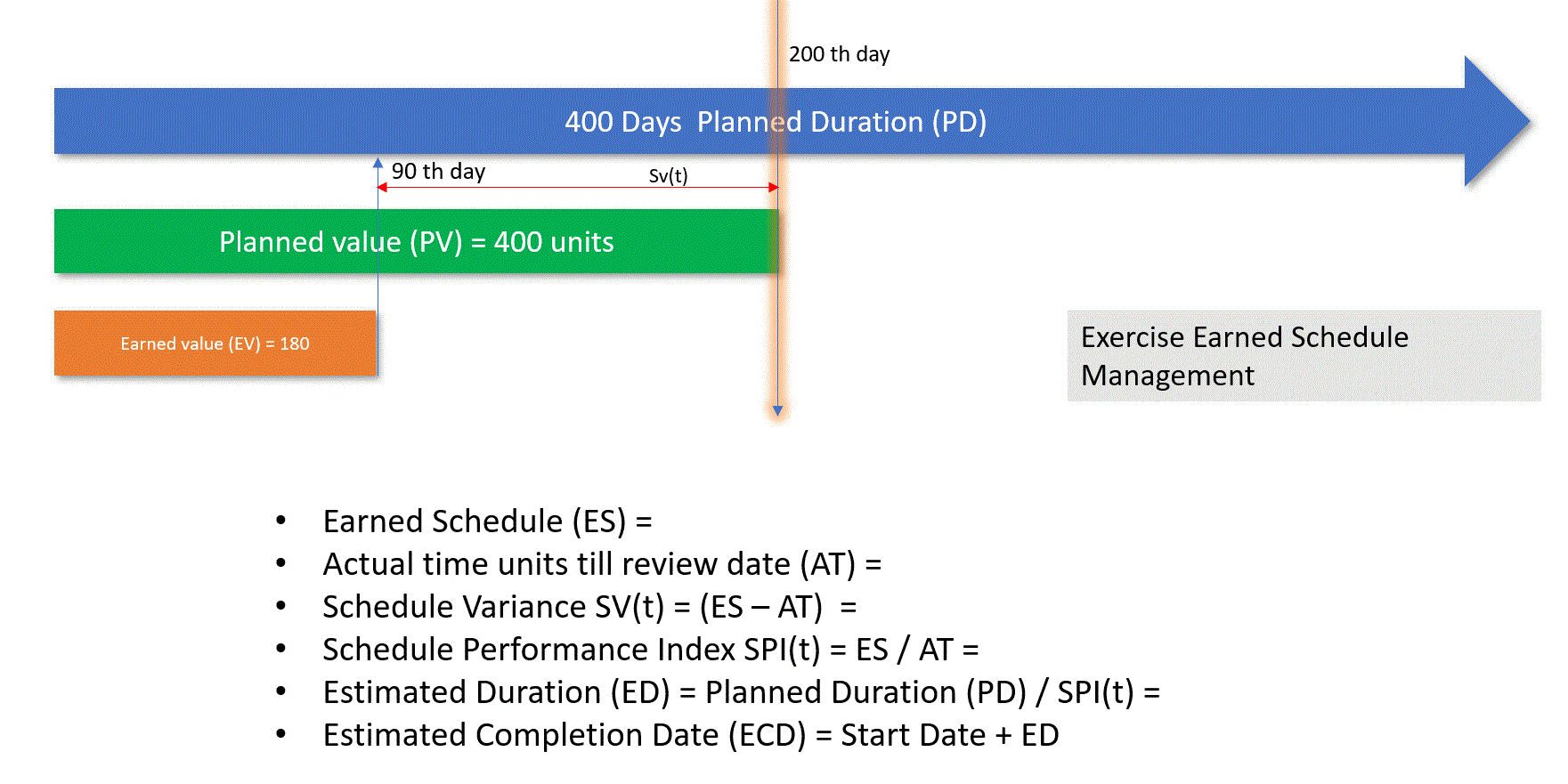Earned Schedule Management (ESM)
Earned Schedule Management (ESM)
Lesson Objective
Introduce the participant to Earned Schedule Management
Effort required – 30 minutes
Lesson Introduction
For projects which has to focus primarily on the schedule only, Earned Value Management becomes an over kill. More than that, at the completion of the project, schedule variance will be shown as zero even for a late project because towards the end of the project both planned value (PV) and earned value (EV) will be same for a completed project.
Earned Schedule (ES) is a breakthrough analytical technique that resolves the EVM dilemma. It is derived from and is an extension to EVM. No additional data is needed for acquiring the ES measures; only the data from EVM is needed. In contrast to the cost-based indicators from EVM, the ES schedule performance indicators are time-based, making them easier to comprehend. The ES indicators provide a status and predictive ability for schedule, analogous to the facility for cost using EVM.
Formulas of Earned Schedule Management
Earned Schedule (ES) – The time point at which the project’s earned value was supposed to be the planned value.
Actual Time (AT) – Time units till the review date
SV (t) = Schedule Variance = Earned Schedule – Actual time
Schedule Performance Index SPI (t) = ES / AT (time units)
Estimated Duration (ED) = Planned Duration (PD) / SPI(t)
Estimated Completion Date (ECD) = Start_date + ED
Example

Consider a project whose duration from the start date till the end date is 200 days.
Let us assume that we are doing the review of the project on the 100th day.
As per the assumption during planning, the team is supposed to complete 2 units per day. So, at the end of 100 days, the team is supposed to complete 100×2 = 200 units
Planned Value = (PV) = 200
Actually, the team completed only 180 units
Earned Value = (EV) = 180
If things have gone as planned ( at the rate of 2 units per day), the team would have accomplished 180 units in 90 days’ time.
Earned Schedule (ES) = 90
Actual time units till review date (AT) = 100
Schedule Variance (t) = SV(t) = 90-100 = -10
Schedule Performance Index (t) = SPI(t) = ES/AT = 90/100 = 0.9
Estimated duration of the project (ED) = Planned Duration (PD) / SPI(t) = 200 / 0.9 = 222 days
Estimated Completion Date of the project = Start Date + ED = Start date + 222 days
Conclusion
For projects for which monitoring cost is not as important when compared to monitoring and forecasting schedule, Earned Schedule Management (ESM) is the most appropriate method and it does not ask for any additional data apart from Planned Value and Earned Value.
Exercise
For the following case, work out the schedule forecast.


